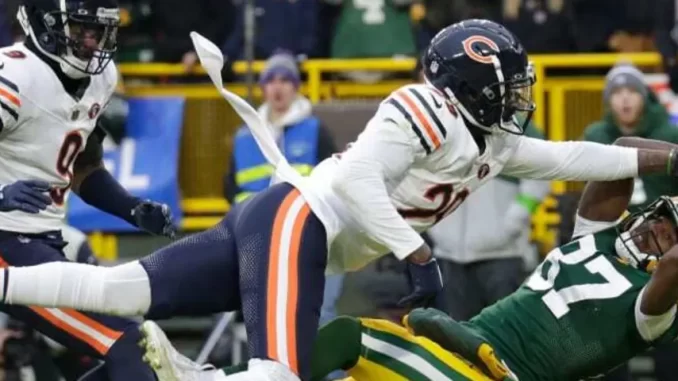
In the fast-paced world of professional football, where every player is a highly-tuned athlete battling for supremacy, mental resilience often determines success just as much as physical prowess. For Chicago Bears cornerback Tyrique Stevenson, this mental resilience was put to the test in a way that few can truly understand. Stevenson’s journey from frustration to excellence not only highlights his personal growth but also serves as an inspiring example of how raw emotion, when harnessed correctly, can be the catalyst for significant improvement.
Tyrique Stevenson entered the NFL with a lot of promise. A standout at the University of Miami, his blend of size, speed, and skill had scouts buzzing. However, transitioning from college to the professional level often comes with a steep learning curve, and Stevenson was no exception.
Early in his career with the Bears, Stevenson faced a series of challenges. The speed of the NFL game was a significant adjustment, and his performance on the field reflected the difficulty he had adapting. There were moments of poor coverage, missed assignments, and penalties that seemed to undermine his potential. This period was not easy for Stevenson, who had always been a standout performer.
The breaking point came in a mid-season game where Stevenson had a particularly rough outing. He was targeted frequently by opposing quarterbacks and struggled to make impactful plays. His frustration was palpable. On the sideline, Stevenson’s anger was evident; he was visibly upset, slamming his helmet and expressing his displeasure with his own performance.
Rather than allowing his frustration to spiral into a self-destructive pattern, Stevenson made a conscious decision to channel his anger into something productive. The first step was acknowledging his emotions. Many players might have tried to suppress their frustration, but Stevenson chose to face it head-on.
In interviews and behind closed doors, Stevenson reflected on his performance and what led to his struggles. He realized that his anger stemmed from a deeper sense of not meeting his own expectations. This self-awareness was critical. Instead of letting his frustration define him, Stevenson used it as fuel for improvement.
Stevenson dedicated himself to a rigorous routine of film study, practice, and physical conditioning. He watched game tape obsessively, focusing on both his own mistakes and the techniques of more successful players. On the practice field, he worked with an intensity that was perhaps missing earlier in the season. His approach to training became more focused, and his mindset shifted from frustration to determination.
The results of Stevenson’s transformation were evident in his subsequent performances. What had once been a period of struggle became a launching pad for growth. His play on the field began to reflect the hard work he was putting in. Stevenson started to show the kind of defensive prowess that had initially attracted the Bears to him.
One of the key indicators of his progress was his improved coverage skills. Stevenson became more adept at reading opposing receivers and anticipating plays. His ability to stay in position and make crucial tackles became more consistent. Where he had once been a liability, he was now becoming a dependable asset in the Bears’ defensive backfield.
Moreover, Stevenson’s improved performance began to influence the entire defensive unit. His confidence and ability to shut down receivers provided a significant boost to the team’s overall defensive strategy. The Bears’ defense, which had struggled with consistency, started to show signs of cohesion and effectiveness.
Stevenson’s journey is more than just a story of personal redemption; it also has broader implications for how athletes handle adversity. His ability to turn frustration into fuel is a testament to the importance of mental resilience in sports. In a league where every player is talented, those who can harness their emotions and learn from their struggles often stand out.
For the Bears, Stevenson’s turnaround has been a positive influence on team morale. His transformation from a struggling rookie to a key defensive player has been an inspiration to his teammates. It demonstrates the value of perseverance and hard work, reinforcing the idea that setbacks are not insurmountable but rather opportunities for growth.
Tyrique Stevenson’s story is a compelling example of how frustration and anger, when managed constructively, can lead to significant personal and professional development. His journey from a frustrated rookie to an essential player on the Bears’ defense underscores the importance of emotional resilience and hard work in achieving success.
For Stevenson, the key was not just acknowledging his anger but using it as a catalyst for positive change. This approach not only helped him overcome his early difficulties but also set the stage for future success. As Stevenson continues to develop as a player and as a leader, his story will undoubtedly serve as a powerful reminder to others in the world of sports and beyond: that even the most challenging moments can lead to the greatest achievements when met with determination and the right mindset.
Leave a Reply